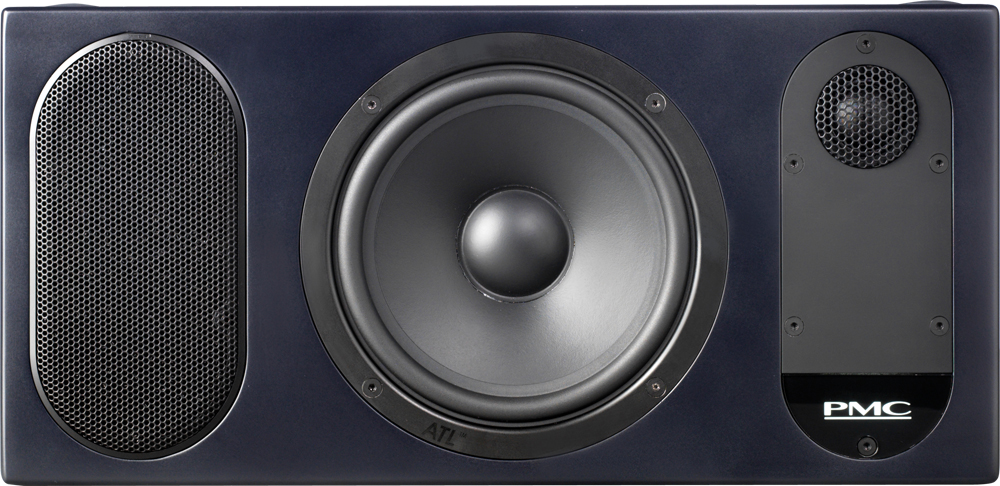PMC twotwo.6 Review
PMC accepts the realities of modern music production with new monitors featuring DSP EQ adjustment. Huw Price tries them out. Details Price £4192/pair Contact HHB – 020 8962 5000 Web www.pmc-speakers.com The Advanced Transmission Line (ATL) cabinet is a PMC staple, but the twotwo Series has features that represent a bit of a departure. By and large, PMC […]

PMC accepts the realities of modern music production with new monitors featuring DSP EQ adjustment. Huw Price tries them out.
Details
Price £4192/pair
Contact HHB – 020 8962 5000
Web www.pmc-speakers.com
The Advanced Transmission Line (ATL) cabinet is a PMC staple, but the twotwo Series has features that represent a bit of a departure. By and large, PMC has maintained that acoustic issues are not its responsibility, and consequently didn’t provide EQ-adjustment controls.
That’s all well and good if you spend your life working in treated acoustic environments, but most of us find ourselves recording and mixing in less-than-perfect rooms from time to time. So the big news is that the twotwo series has equalisation adjustment; the even bigger news is that the signal is processed digitally. In fact, the twotwo Series are the only PMC nearfields to feature EQ adjustment other than the ultra-high-end AML Series monitors.
Analogue and Digital
The twotwo.6 accepts analogue and AES3 digital inputs up to 192kHz. Analogue signals pass through a gain stage that should be adjusted to utilise the full scale of the 24-bit A/D converter that follows. Next in line is the DSP controller for volume, driver response, EQ, crossover and overload protection, after which the signal is converted back to analogue to feed two Class-D power amps, with 50W and 150W allocated to the tweeter and woofer respectively.
After sample-rate conversion the digital signal is sent directly to the DSP stage. The overload protection is interesting because it reacts only to transient peaks, rather than applying a blanket limiter to the programme material. Once again, the DSP stage makes this possible.
High- and low-frequency shelving adjustments can be made in 0.125dB increments. The shelf frequencies are 1kHz and 500Hz. You can also set a low-frequency slope at five frequency points with a 6dB/octave filter. The twotwo.6 has four push-buttons for adjusting settings, along with a small LCD screen on the back panel to let you see what you’re doing.
Two or more twotwo Series speakers can be connected via In/Thru RJ45 sockets. The first speaker in the chain provides volume data and digital audio to subsequent speakers, and an optional remote control (due for release later this year) can be connected to its In socket.
The manual is replete with placement tips and diagrams. The twotwo.6s can be used upright or placed on their sides. In both cases, the offset tweeter must be positioned towards the centre, so the left speaker in sideways mode becomes the right speaker in upright mode.
Open Wide
Effortless clarity is the order of the day. We had our usual monitors set up right alongside the twotwo.6s and by comparison they sounded muffled and indistinct – for the record they’re not, but the twotwo.6s just took things to another level of transparency.
The detail resolution is phenomenal. One of our reference tracks features a jazz guitarist who occasionally taps the top of his pickups with his plectrum while playing. This barely noticeable detail sounded clear and obvious.
Bass content is handled smoothly and evenly with not even a trace of wind or mechanical noise. In our room the response appeared to start rolling off at around 50Hz, but the twotwo.6s were still able to reproduce clear bass tones down to 30Hz. Watch this space, because PMC tells us that a matching subwoofer is scheduled for release.
If we were to get really picky about the bass we might say that some speakers may convey the rhythmic aspects of dubby bass lines with marginally more speed and tightness, but we’re really talking about large and expensive infinite-baffle types.
The principal reason the twotwo-6s are outstanding is that nothing stands out. There’s no low-mid hump, forward midrange or glassy treble sheen and the balance remains constant regardless of level. The depth of the soundstage is incredible and left/right imaging is about as crisp as it gets. If you prefer listening to your speakers rather than listening to the music, these may not be for you. But if you want a clear and neutral window into what’s going on with your mix, the twotwo-6s deliver everything you could ask for.
Verdict
+ Outstanding clarity
+ Pinpoint imaging
+ Extended bass
+ Analogue and digital inputs
+ Onboard EQ
– Power switch at rear
– No auto standby
– No optical digital input
Outstanding sound quality with DSP-controlled equalisation and extended bass response.



